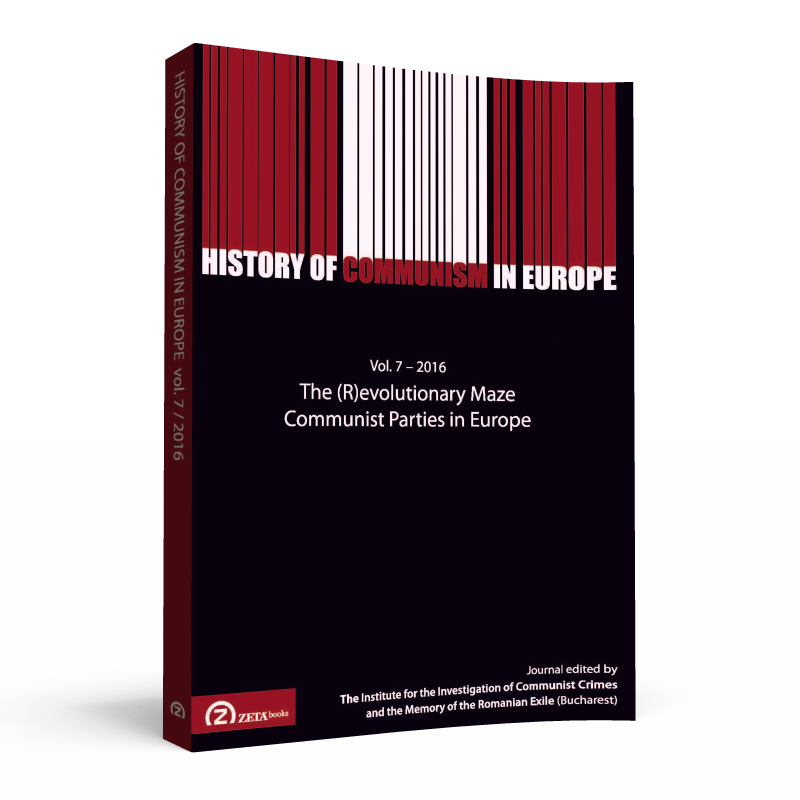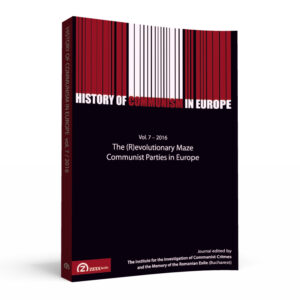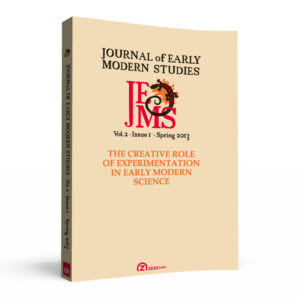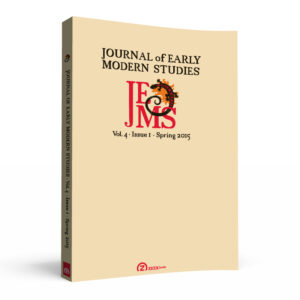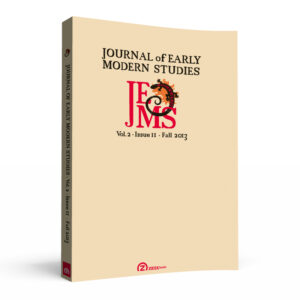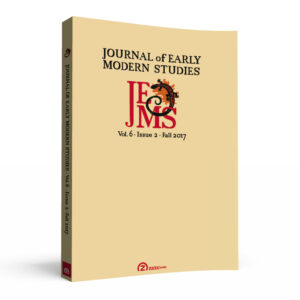ARGUMENT
Dalia BÁTHORY: “Talkin’bout a Revolution”
- Abstract: The proclamation of liberal democracy as the absolute winner of the Cold War and the emergence of “prosecutorial” history after the fall of the Eastern Communist Bloc seemed to have established a certain path for researchers with regard to post-war dictatorships in Central and Eastern Europe. A closer look at the meaning of “revolution” as well as at new research efforts reveal strong connections between the East and the West during that time, that determined changes in the pattern and style of the scientific discourse analysing the post-war decades.
I. “MAKE – BELIEVE”. COMMUNIST PROPAGANDA AND ITS IMPACT ON SOCIETY
Enis SULSTAROVA: “Eurocommunism is Anti-Communism”: The Attitude of the Party of Labour of Albania about Western Communism in the early 1980s
- Abstract: Following the rift with China, Albania found itself on a lonely road towards pretending to protect the purity of the Marxism-Leninism in Europe. Although diplomatic relations with the West were restricted only to trade, the Albanian Communist leader, Enver Hoxha, was interested in recent developments inside Western Communist parties. Through Eurocommunist theorizations, the parties in Italy, France and Spain abandoned revolutionary aims, incorporated democracy in their ideology and tried to build electoral coalitions with socialist parties and other left-wing forces. By contrast, the Albanian Enver Hoxha considered that Communist revolution was still possible in the world, and the Communist parties still acted as Leninist revolutionary vanguards. From this perspective, he denounced Eurocommunism as a continuation of “revisionism”. This paper will present the attitude of the Party of Labour of Albania about Western Communism by placing it in its historical context and framing it in light of broader debates inside the European Communist movement.
Klejd KËLLIÇI, Ermira DANAJ: Promoting Equality, Perpetuating Inequality: Gender Propaganda in Communist Albania
- Abstract: During Socialism, the “women’s issue” was among the key state policies in Albania. The emancipation issue followed a pattern similar to other socialist countries, called the “women’s emancipation model”. It was part both of the state rhetoric and the general need to include women in the “socialist transformative processes”. This involved policies that supported women’s participation in the productive labour force, as well as the introduction of new laws that promoted the equality between men and women. A reconfiguration of gender roles and the gender division of tasks occurred during socialism. In Albania, this process had two distinct phases. From 1944 onward women’s emancipation was thought of in terms of their participation as an additional force in the post-war reconstruction effort, even though sporadic and aligned with the primary political needs of the regime. The second phase occurred during the ’60s following the Party’s directive “For the complete emancipation of women” (1967). This phase was considered strategic as it coincided with the efforts to industrialize the country and to eventually fully centralize the control over the territory. This paper aims to investigate the entanglements between gender propaganda and gender practices. For this purpose, we analyse various party speeches and policies as well as examples of “heroines” and propaganda movies. A thorough analysis of State Archives and other documents was undertaken to substantiate this investigation.
Roman JANKOWSKI: Media, Censorship and the Church in the People’s Republic of Poland
- Abstract: During the Communist regime, after Poland was officially proclaimed the People’s Republic of Poland, the aim of the Polish Communist government was to control all aspects of society. Communist ideals were enforced in books and other publications; censorship was introduced on all published materials. This paper aims to present the situation of (print) media in People’s Poland, as well as to provide a background and description of Polish censorship. Additionally, this paper will exposit and examine the socio-political role of Tygodnik Powszechny (Universal Weekly) in Polish society. As TP is a Catholic weekly, an outline of the unique socio-political role of the Polish Roman Catholic Church in communist Poland will accompany the above analysis. This paper is based on the research conducted by the author in partial fulfillment of the requirements for the Master of Arts degree written and defended at the Central European University in Budapest in 2012.
II. PROFESSIONS IN THE COMMUNIST REGIME
Francesco ZAVATTI: Propaganda across the Iron Curtain: The Institute of Historical and Socio-Political Research affiliated to the Central Committee of the Romanian Communist Party and its Network in Italy
- Abstract: This article examines a case study of international Communist propaganda during the Cold War. The Institute of Historical and Socio-Political Research (ISISP), a historical propaganda organization affiliated to the Romanian Communist Party (RCP), succeeded in penetrating the Iron Curtain by distributing its works through a social network provided by the Italian Liberation Movement Institute, and in publishing its works in Italy, with the help of the Gramsci Institute, as well as publishers like Editori Riuniti and Nicola Teti. The ISISP established a mutually beneficial partnership with various Italian actors: ISISP and the regime succeeded in publishing international propaganda; the Italian publishing houses were paid by ISISP to print and distribute their edited volumes, with the double advantage of keeping political ties with the RCP while also protecting their own limited finances.
Mara MĂRGINEAN: Mutable Socialist Displays. Transnational Romanian Architectural Exchanges during the First Two Decades of the Cold War
- Abstract: This article examines the making of Romanian diplomatic practices during the first two decades of the Cold War by analyzing the activity of the Romanian Institute for Cultural Relations with the Foreign Countries (IRRCS) in the field of architecture. I investigate how transnational cultural exchanges conducted jointly by party members and architects adjusted the professional careers of the latter. Questions related to what was good or bad, which images were still valid iconic representations of the country, what values the architects should share, or how to depict architecturally modernisation and the nation dominated the IRRCS debates. Using archival information consisting of reports of cultural activities abroad, foreign travelers’ statements, itineraries, exhibitions’ materials and photographic records etc., I address Romania’s self-representation practices at home and abroad constructed in relation to the Other – the Easterner and Westerner, in close connection to the shift in the country’s economic interests.
Elisa GOUDIN – Faire collaborer artistes, intellectuels et ouvriers pour créer une société meilleure : les stratégies politiques du SED en matière de gestion de la culture en RDA
- Abstract: Les archives municipales de Berlin ont conservé tous les documents produits par la Maison berlinoise du travail culturel, Berliner Haus für Kulturarbeit, qui a été fondée en 1953 sous le nom de Berliner Volkskunstkabinett et dissoute en 1991. Ces archives permettent de suivre en filigrane les réflexions conduites en RDA sur le thème de l’action culturelle publique, dont les deux interrogations principales peuvent se résumer ainsi : comment peut-on encourager différentes formes de participation des travailleurs et ainsi favoriser le développement d’un art sensé être authentiquement populaire et acquis à la cause de la révolution socialiste ? Et comment l’art peut-il être le vecteur d’une identification « nationale » avec l’État de RDA ? Nous proposons d’étudier ces archives sous l’angle du combat mené par le SED, le parti communiste au pouvoir en RDA, pour créer une société révolutionnaire, pour rendre possible l’utopie d’une société parfaitement égalitaire par le moyen de l’art. En effet, si les choix économiques, politiques, sociaux du SED sont bien connus aujourd’hui, les chercheurs se sont pour l’instant moins intéressés au langage du politique dans le domaine artistique, et notamment à la question centrale de savoir comment ce régime concevait son rôle et sa responsabilité à l’égard des pratiques artistiques des ouvriers.
Alexandra IANCU – The ‘Westernisation’ of the Communist Elites in Romania: Elite Modernity, Integration and Change
- Abstract: The ministerial recruitment strategies in Communist Romania are a symmetric replica of the elite selection patterns in parliamentary democracies. Starting with the mid-60s, all the major traditional pathways to power formally mirror mechanisms of the elite selection and differentiation, which are commonly encountered in Western democracies. During the Communist regime, “atypical” credentials such as education (international degrees), academia, and the economic experiences also increased the likelihood of a promotion in public office. Starting from the notable differences between the Romanian elites and those in other Communist countries in the region, the paper argues that intertwined patterns of “Westernisation” and patrimonial-type credentials contributed to the consolidation of the Romanian Communist Party and hindered, in the aftermath of the regime change, the first attempts at elite renewal and democratisation.
III. COMMUNIST PARTIES AFTER THE COLLAPSE OF THE SOVIET BLOC
Boris POPIVANOV: Between the Past and the West: Bulgarian Post-Communist Left in Search of Legitimacy
- Abstract: Communist successor parties in Central and Eastern Europe have adapted to the new realities according to a popular model differentiating between pragmatic reform and leftist retreat. The Bulgarian Socialist Party, which succeeded the ruling Communists, seems to diverge from this model, neither fully transforming into a Western European social democratic formation nor remaining a Communist one while keeping elements of both. The reasons behind this ambivalent position are examined according to the party’s orientation toward its own past in its three dimensions: program messages, voters’ attitudes and commemoration of Communist legacy.
Álvaro CÚRIA: Southern European Communist Parties’ Public Reaction to the 1989/1991 Set of Events in Eastern Europe: Framing the Analysis Through a New Perspective
- Abstract: This article explains the methodology behind our PhD thesis, that describes how five Southern European Communist parties reacted, through their party press, to the events that took place in Eastern Europe from 1989 to 1991, such as the Fall of the Berlin Wall in November 1989, the deposition of the Romanian dictator in December 1989 or the Soviet Coup d’état in August 1991. We describe an interdisciplinary methodology which combines elements of history of the present, historiography of Communism and communication sciences. We will summarize our study, after explaining our methodology and adapting the framing party press for the purposes of this work. Finally, we’ll draw the conclusions after presenting one specific case: the interpretations provided by each party following the parliamentary elections of June 1989 in Poland.
IV. ESSAY
Stefan LÉMNY: La délation dans la Roumanie communiste. Lectures pour une nouvelle recherche
- Abstract: L’étude de la dénonciation n’est pas un sujet nouveau dans l’historiographie mondiale. Elle bénéficie de prémisses importantes, reparties très inégalement par époques historiques ou par régions géographiques. Il s’impose de constater, sans entrer dans les détails des préoccupations en la matière, l’importance qu’a connue la recherche de ce phénomène dans l’antiquité gréco-latine, dans la république vénitienne de l’époque pré-moderne et moderne ou dans la France révolutionnaire. La chute du Mur a considérablement apporté à l’ordre du jour cette direction d’études, dans le contexte de l’intérêt plus général pour l’histoire du monde communiste. En effet, comment comprendre le fonctionnement de ce monde sans prendre en compte son mécanisme complexe, entremêlant le bruit de la propagande et le silence du secret ? Nous souhaitons proposer une direction de recherche à partir de l’évaluation de l’historiographie la plus récente et de la méthodologie qu’elle suggère.
V. BOOK REVIEW
Ludovic BÁTHORY: George CIPĂIANU: Catolicism şi comunism în România. 1946-1955. O perspectivă diplomatică franceză [Catholicism and Communism in Romania. 1946-1955. A French Diplomatic Perspective]
ISSN: 2069-3192 (paperback)
ISSN: 2069-3206 (electronic)
ISBN: 978-606-697-037-2 (paperback)
ISBN: 978-606-697-038-9 (ebook)

